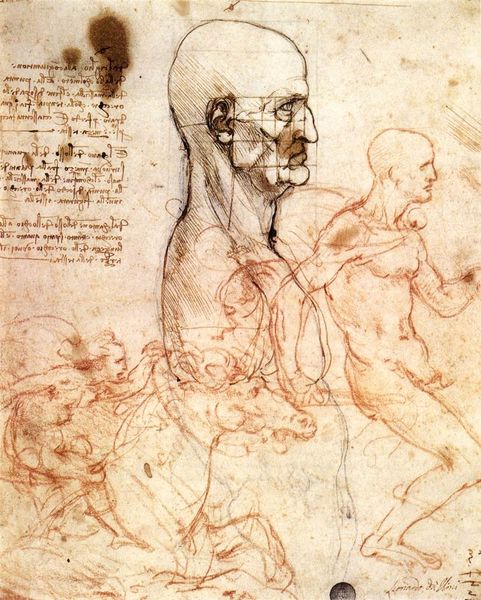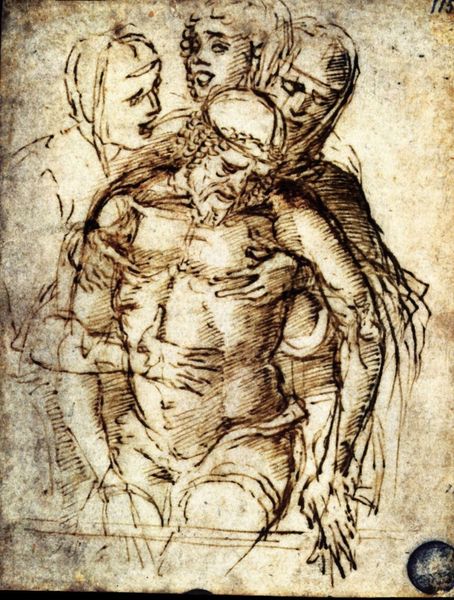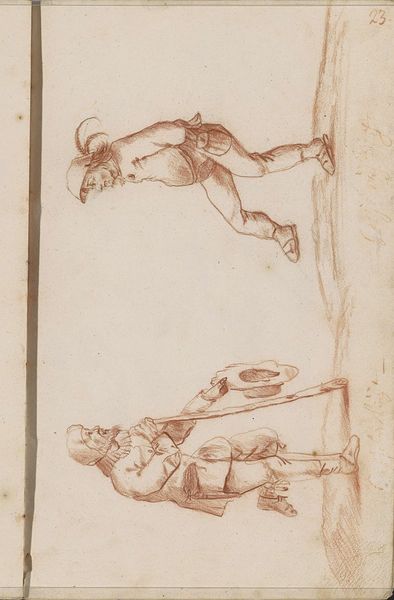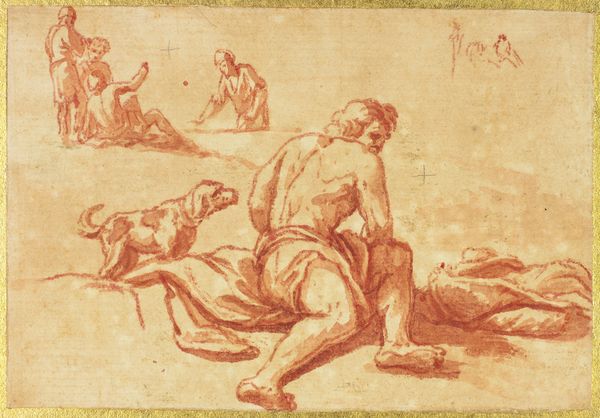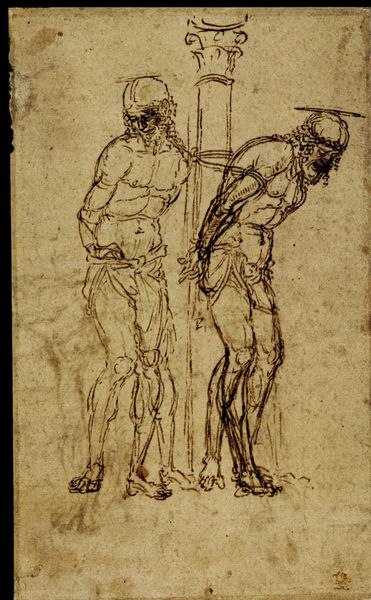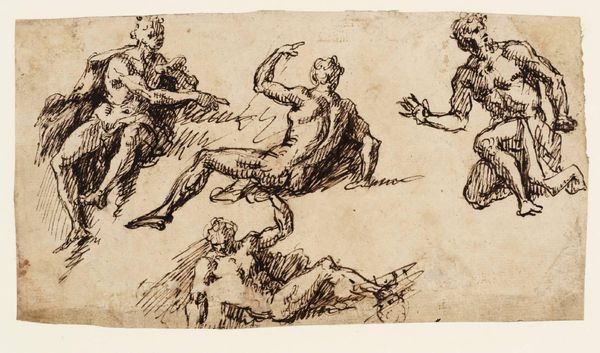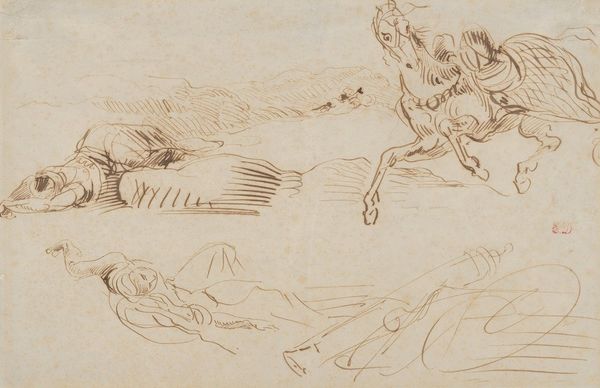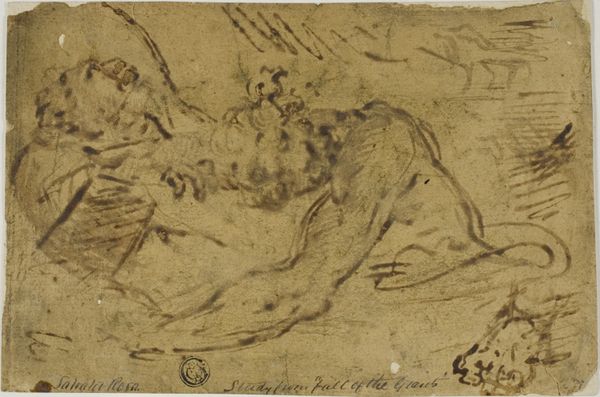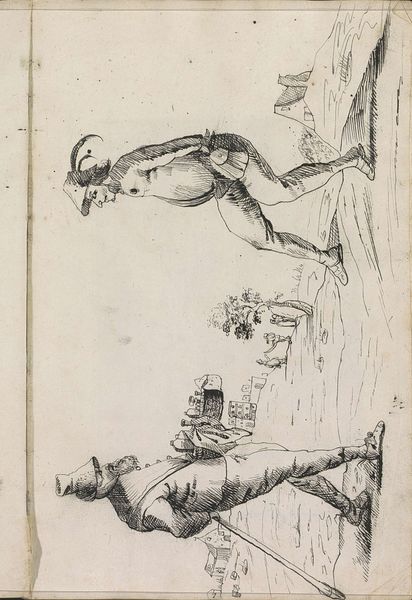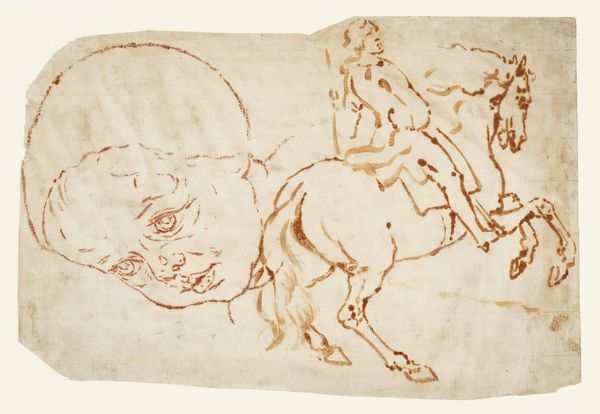
drawing, ink, charcoal
#
portrait
#
drawing
#
pencil sketch
#
charcoal drawing
#
charcoal art
#
ink
#
charcoal
#
history-painting
#
italian-renaissance
Copyright: Public domain
Curator: Observing Mantegna's "Three Studies of Elongated Figures," created circa 1455, now residing in the British Museum, what immediately captures your attention? Editor: Honestly? A sense of tragic beauty, and maybe even isolation? The figures, rendered in ink and charcoal, look like they're floating, detached. There is something both ethereal and corporeal at play here. It almost reads like a macabre dance of mortality, or out-of-body experience. Curator: The elongation, a Mannerist tendency avant la lettre, certainly contributes to this. But let’s focus on the materiality. Mantegna's sharp, controlled strokes meticulously delineate musculature, exploring depth and perspective with masterful chiaroscuro. This heightened naturalism conveys tangible volume and texture within each figure, despite being a sketch. Editor: I can see it; the academic dedication is obvious but it still breathes! The roughness of the charcoal lines prevents it from becoming too clinical or detached from emotion. It lends each form an incredible tenderness, though maybe tenderness isn’t the right word… intimacy perhaps? There’s this immediate sense of exposure, not necessarily sexual but almost unbearably, devastatingly human. Curator: Note also the composition – these studies appear unbound. Each floats independently upon the surface of the substrate. Mantegna’s arrangement presents an anatomical triptych, deconstructed. Editor: Which elevates them from mere studies to symbolic representations. Maybe they depict three stages of life or death? Or perhaps Mantegna’s showing us different perspectives on the same human form – facets of a single soul. The mystery amplifies their symbolic heft, in my opinion. It reminds me of death masks... sort of... except in drawing format, with a breath of warmth. Curator: Indeed. Mantegna transcends simple anatomical representation, creating potent allegories of the human condition that resonate across the centuries, thanks to the inherent expressive quality within those minimalist linework. Editor: Absolutely, and with that ambiguity—everyone can experience this and find a common ground with each other. We’ve taken a look at mortality, vulnerability, exposure—ultimately we face death by ourselves, but in observing, creating and dissecting this art, maybe it does not have to be that solitary of an experience, thank you for walking me through that thought.
Comments
No comments
Be the first to comment and join the conversation on the ultimate creative platform.
